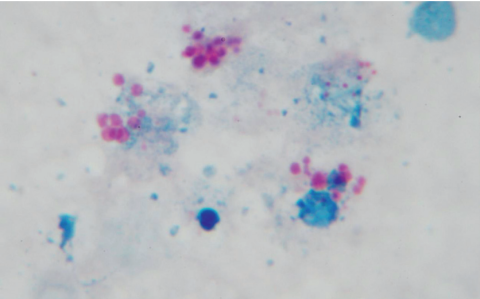Sarcoidosis may present acutely, with a sudden and severe onset, or may have a slow, insidious presentation. Disease duration and severity vary. Some patients may have a relatively short disease duration of several months to a year or two, with the disease then going into remission, either spontaneously or with the help of medication. Other patients may develop a chronic form of sarcoidosis in which the disease remains active for many years and usually requires medicating. Both acute and chronic disease may produce serious medical issues, but it is usually chronic patients who suffer from the most serious disease. In general, more patients are acute and achieve remission than those who become chronically ill. In general, most patients can achieve symptom relief with appropriate medication.
Sarcoidosis, first described more than 120 years ago, is a multisystem disease of unknown cause that is characterised by the formation of granulomas (tiny clusters or nodules of inflammatory cells) in various organs, mainly the lungs and the lymphatic system, but also on skin, in eyes and kidneys. Sarcoidal granulomas may spontaneously resolve or they may accumulate and persist. Accumulation and persistence of granulomas within an organ can lead to dysfunction and cause scarring and irreversible organ damage. In the heart, sarcoidosis may be manifested by silent myocardial granulomas, that can lead to symptomatic conduction disturbances, ventricular arrhythmias and progressive heart failure and sudden death. Progression of the disease over time leads to increasing morbidity, often lung and heart transplants or death.
There are significant racial and gender differences in disease severity, incidence, and prevalence. Worldwide, women are more often affected than men. The highest annual incidence has been observed in northern European countries, at 5 to 40 cases per 100,000 people per year. The incidence of sarcoidosis in Australia is unknown but is probably heavily underestimated at 4.4 to 6.3 patients per 100,000. Because of difficulties with diagnosis and management of the condition we suspect that the real incidence may be as high 20-30 per 100,000 people.
Sarcoidosis in Australia is a multi-system disease of unknown aetiology. Systems involved typically include lung parenchyma (66%), thoracic adenopathy (58%), skin (22%), ocular (18%), joint (11%), gastrointestinal tract (5%), central nervous system (3%) and hypercalcaemia (3%). Cardiac sarcoidosis (CS) may represent 2-5% of all cases, although autopsy studies and modern cardiac imaging suggests that this may represent only a small proportion of CS patients.
